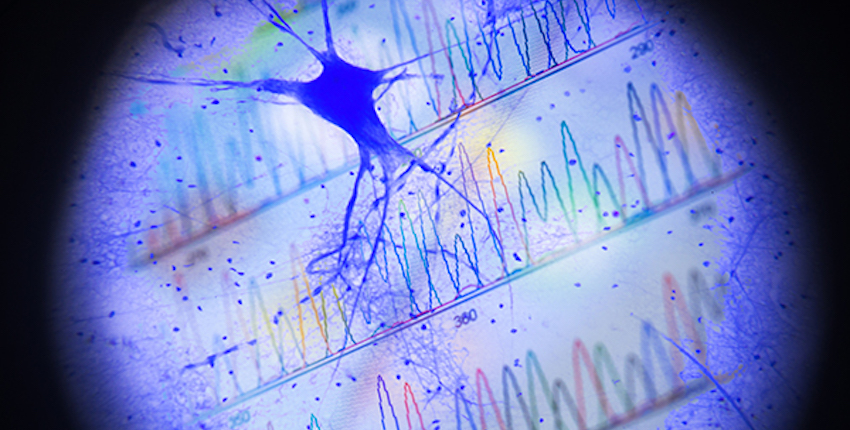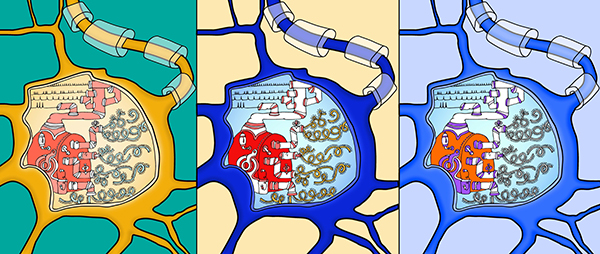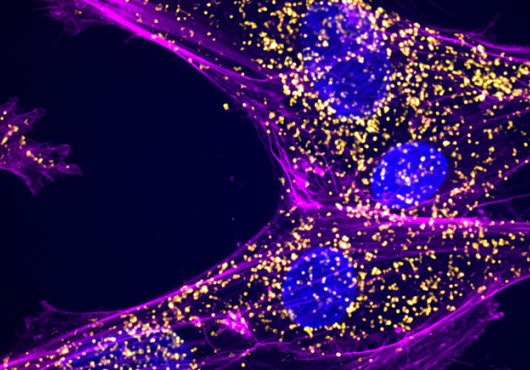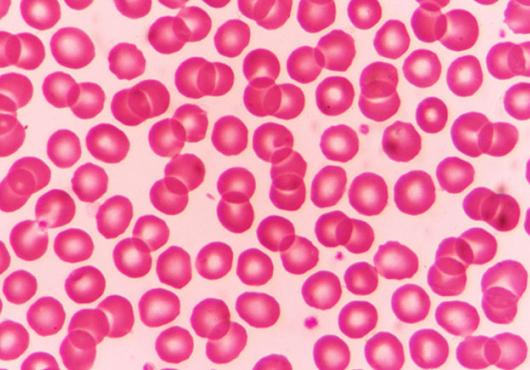
From burning your palm on a hot pan handle to memorizing the name of a new acquaintance, “anytime you experience something, your neurons are active,” says Kelsey Tyssowski, a graduate student in genetics at Harvard Medical School.
Different experiences stimulate different patterns of activity in brain cells. Researchers want to track these activity patterns to better understand how the brain makes sense of the world, but they’ve been limited by the transient nature of the activity and by the tiny fraction of neurons they’re able to study at once—only a few thousand out of an estimated 100 billion.
A new study by Tyssowski, HMS graduate student Nicholas DeStefino and colleagues promises to change that.
Studying cells in a dish and lab mice, the researchers reported April 19 in Neuron that bits of a neuron’s activity record can be reconstructed by analyzing its gene expression pattern—the particular genes that are active in the cell.
Specifically, the researchers found that expression patterns reflect how long a neuron fired in response to a stimulus.
“The longer a neuron’s activity persists, the more genes are turned on by it,” explained Jesse Gray, assistant professor of genetics at HMS and co-senior author of the paper, along with Ramendra Saha of the University of California, Merced, and Serena Dudek of the National Institute of Environmental Health Sciences.
Because gene expression is easier to measure across many neurons than neuronal activity, linking the two should now allow researchers to “analyze the activity patterns of tens of thousands of neurons in a single experiment,” said Gray.
That, in turn, promises to enable more comprehensive research into how the brain works, particularly how it forms memories.
An illuminating experiment
Tyssowski made her first discoveries in the Gray lab using neurons in a dish.
As she investigated how neuronal activity leads to gene activation, she found that exposing the cells to a brief stimulus turned on genes that responded quickly, while a sustained stimulus turned on both fast-response and slow-response genes.
“There’s an elegance to what Kelsey found, an unexpected simplicity to nature,” said Gray. “The faster a gene is able to be turned on, the more likely it is to be turned on by brief activity. That makes intuitive sense, but we hadn’t known that that’s how it works.”
The results were intriguing, but a critical question loomed, said Tyssowski: “Does this happen in an actual brain?”
Together with Jin Hyung Cho, a research fellow in genetics in the Gray lab, Tyssowski teamed up with Mark Andermann, HMS associate professor of medicine, and research technician Crista Carty, both at Beth Israel Deaconess Medical Center, to confirm the findings in mice.
The scientists used an established experimental method in which mice are housed in the dark for a while to clear out any residual gene expression related to light exposure; then they turned on lights near the cages for either a few minutes or a longer time.
The team recorded the activity of light-sensing neurons in the mice’s visual cortex, a brain region that handles vision. To the researchers’ delight, Tyssowski’s initial findings remained true: Brief light exposure turned on fast-response genes, and longer exposure turned on both fast- and slow-response genes.
Given this consistent outcome, the researchers wondered: Would it be possible to estimate the duration of an earlier exposure simply by looking at a neuron’s gene expression?
The answer, it seemed, was yes. Tyssowski successfully trained a computer to look at gene expression patterns in neurons from the mouse experiment and guess whether they had undergone brief or sustained light exposure.
Two-thirds of the puzzle still remain. Now that they’ve figured out the relationship between the duration of neuronal activity and changes in gene expression, researchers can explore the dynamics of two other major types of neuronal activity variation: frequency of firing and “burstiness,” periods of rapid firing with long gaps in between.
Thinking, fast and slow
The group’s findings could improve understanding of the connection between what Gray calls the “fast computers” and “slow computers” inside neurons that convert sensory experiences into thoughts and actions.
“The fast computer, which performs electrical and chemical computations in milliseconds, acts in the moment to elicit rapid actions that determine whether we get eaten or not,” said Gray.
The slower computer uses the genome to perform computations over hours or days.
“It helps store memories that make it easier to avoid getting eaten the next time we encounter the same predator,” said Gray.
Decoding the relationship between these computers could help solve the puzzle of how the slow computer completes two of its major tasks: storing information following new experiences and reining in neuronal overactivity.
“One of my hopes is that our study sparks more interest in the connection between fast and slow, which we call the coupling map,” he said. “We hope our fellow neuroscientists will think about this map more, because we think it’s important for understanding how the brain operates.”

This research was supported by the NIH (grants R01 MH101528-01, R01 MH116223-01, R01 DK109930, Z01 ES100221, R00 MH096941 and New Innovator Award DP2 DK105570), the Canadian Institute of Health Research, the Giovanni Armenise-Harvard Foundation, the National Science Foundation Graduate Research Fellowship Program, a McKnight Scholar Award, a Harvard Brain Science Initiative Bipolar Disorder Seed Grant, the Kaneb family and Kent and Liz Dauten.





